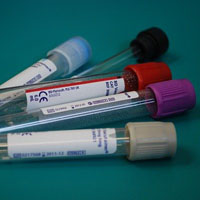Assessment of serum uric acid levels in patients with cervical intraepithelial neoplasia in Benin City

Accepted: 22 January 2021
All claims expressed in this article are solely those of the authors and do not necessarily represent those of their affiliated organizations, or those of the publisher, the editors and the reviewers. Any product that may be evaluated in this article or claim that may be made by its manufacturer is not guaranteed or endorsed by the publisher.
Authors
Elevated Uric acid levels in humans have been associated with cancer, though the pathogenic mechanism is still unclear. The present study attempts to investigate if elevated uric acid levels could be used to investigate the pre-malignant lesions leading to cervical cancer. The study which was carried out at the Department of Obstetrics and Gynaecology, University of Benin Teaching Hospital Benin City and Department of Chemical Pathology, Edo University Iyamho, Edo state Nigeria, between August, 2017 and January 2019, examined the capacity of detecting Cervical Intraepithelial Neoplasia (CIN) early with serum uric acid in order to increase the chances of survival of women at risk. A total of 197 female participants were recruited for the study. Based on histological diagnosis, they were grouped as CIN 1, CIN 2 and CIN 3. The control group were negative for CIN. Venous blood was obtained from participants and serum uric acid levels were determined using standard laboratory methods. The benchmark for serum uric acid levels in diagnosing CIN presented in this study was at 6.55 mg/dL. The probability that uric acid level higher than 6.55 mg/dL indicate the disease probabilty was 93.1%. The age category within the CIN group with the highest level of uric acid was 31-40 years (10.86 mg/dL). The use of serum uric acid as an excellent biomarker for the diagnosis of CIN is therefore suggested due to its high sensitivity.
How to Cite
PAGEPress has chosen to apply the Creative Commons Attribution NonCommercial 4.0 International License (CC BY-NC 4.0) to all manuscripts to be published.

 https://doi.org/10.4081/acbr.2021.99
https://doi.org/10.4081/acbr.2021.99



